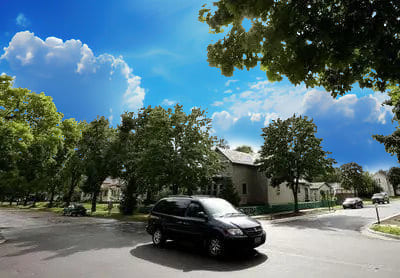Blind Intersection | What is a Blind Intersection Speed Limit?
What is a blind intersection? A blind intersection is one where your ability to see approaching traffic or possible dangers is significantly limited or compromised. A “blind intersection speed limit” refers to the recommended or legally enforced maximum speed at which a vehicle should approach and navigate an intersection that has limited visibility.
What is a blind intersection?
We come across different kinds of road intersections while driving in our daily lives. Many intersections are straightforward but some can be dangerous because of their poor visibility which is known as blind intersection.
A blind intersection is one where it is impossible to see what is coming from other directions due to physical features such as buildings, greenery, or landscape, which obstructs or greatly restricts the view of approaching traffic, pedestrians, or other potential hazards.
Blind intersection speed limit
At a blind intersection, what is the speed limit?
To increase safety, a slower speed limit is required at blind intersections. In California, the speed limit for a blind intersection is 15 miles per hour.
When you can’t see what’s going around the corner or from other directions, it’s very important to approach these crossings cautiously to lower the chance of accidents.
Blind intersection speed limit
Here are some key reasons why a blind intersection speed limit is important.
Blind intersection characteristics
Blind intersections have several traits in common that make them particularly risky:

Blind Intersections and Their Risks
There are various potential risks and dangers at blind intersections:
Increased Collision Risk: Drivers who fail to give the right of way can get into accidents at blind crossings because of poor visibility.
Hazards for Pedestrians: Due to vehicles’ reduced sight, pedestrians trying to cross at blind intersections may also be at risk.
Unpredictable Movements: When drivers finally observe incoming traffic, they can make quick, unexpected maneuvers that increase the likelihood of accidents.
Frequently Occurring Blind Intersections
There are many things that can lead to blind junctions, including:
Road Design: Blind spots can be produced by shoddy planning and design of roads.
Terrain and topography: Views may be obstructed by hills, bends, or height changes.
Buildings and other structures: Structures placed close to crossroads may obstruct sight lines.
Drive through a Blind Intersection – what should you do
Here are some crucial pointers for drivers while driving through a blind intersection.
Reduce Speed:
Slow down when approaching a blind intersection to give yourself more time to react.
Be Prepared to Stop:
Always be prepared to come to a complete stop if needed.
Use Caution:
Exercise caution, and practice defensive driving techniques.
Observe Signs and Signals:
Pay attention to any posted signs or signals.
Modern Technology:
Use modern technology like blind-spot monitoring, GPS, and navigation to see advance warnings about upcoming intersections.
Most Asked Questions in DMV Written Tests:
At a blind intersection, what is the speed limit?

